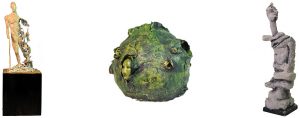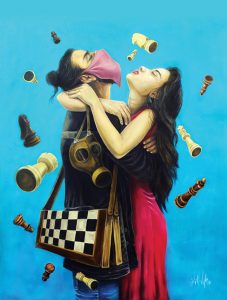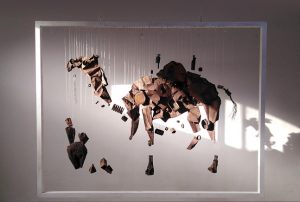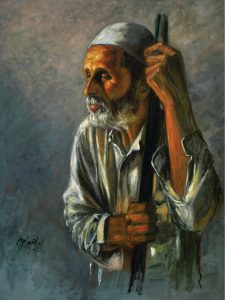Curator: Dr. Bahaa Abudaya
Gaza ART
This exhibition is the product of the “Contemporary Linkages” project that seeks to respond to the needs of artists in the Gaza Strip through a series of training courses and collaborations with Arab and international expertise to implement art residencies and provide production grants for Gazan artists. The project also aims to present the experiences of several local artists and the works of eight prominent artists and founders of the art movement in the Gaza Strip. Contemplative Contrasts provides visitors with their own space to contemplate the art experiences and contrast the creative development in all its types – between the conventional and the unconventional in the local art scene.
The exhibition demonstrates the overall art experiences in the Gaza Strip, whether inspired by classical and traditional expression instruments and styles or associated more with mixed media and the worlds of artistic experimentation. Since the early stages of the Palestinian art movement following 1948, political discourse with its theorization dominated visual creativity in Palestine. This became inaccurately associated with the term “Palestinian Art” and was reflected in many mediums from painting to sculpture to printing. The influence of the direct politically theorized narrative continued for generations as a result of the suffering imposed on Palestinians by the occupation. It spawned a distinctive identity of Palestinian art production that necessitated its politicization and, to a great extent, came at the expense of the artwork and its concept.
This commitment, at a later stage, pushed the language of expression and its instruments into a space of experimentation and contemporalities from the style to the production of works of art – works that not only keep up with the pace of modern-day language with its techniques and tools but that also address nonpolitical issues, thus providing visitors with a space that allows them to judge, compare, and contemplate. A space that was at all times delimited with the domination of the political context and the direct effect of a disastrous event and the proximity of daily catastrophes in the Gaza Strip. This has literally transformed the viewer into a recipient, without providing a means of interaction with the artistic language and the ability to compare between different experiences.
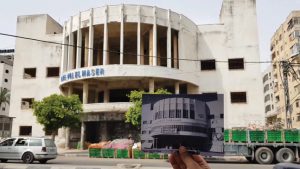
Stemming from this contrast, the exhibition aims to provide an open space and a white space that presents everything to viewers so that they can offer an opinion on what they consider conventional and unconventional. And as a parting challenge, they are asked: Is this art? What is art?

